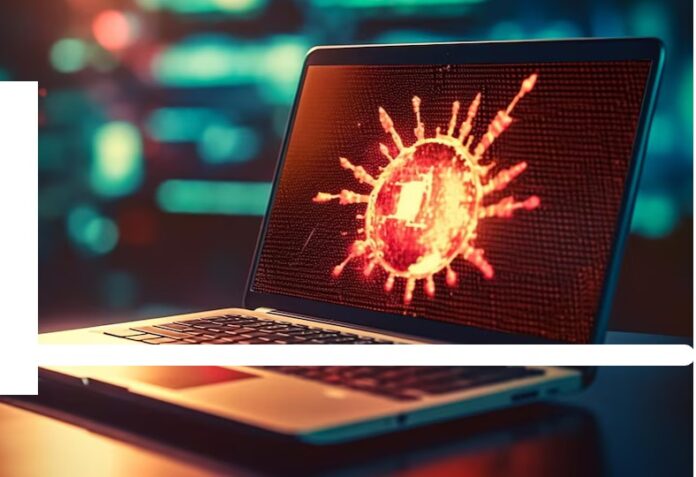Introduction to WebCord Virus
Welcome to the digital realm where cyber threats lurk in the shadows, waiting to strike unsuspecting victims. Today, we shine a light on the WebCord virus – a sneaky and malicious software that can wreak havoc on your computer system. Let’s dive into understanding what this virus is all about, how it spreads, its symptoms, prevention methods, steps for removal, and why keeping your antivirus software up-to-date is crucial in safeguarding your digital world. So buckle up as we embark on a journey to unravel the mysteries of the WebCord virus!
Table of Contents
How is the WebCord Virus Contracted?
WebCord Virus can sneak into your system through various deceptive ways. One common method is through malicious email attachments or links. You might unknowingly download an infected file, thinking it’s harmless. Another way is by visiting compromised websites that automatically trigger the virus to download onto your device without your knowledge.
Additionally, downloading software from untrustworthy sources can also expose you to the risk of contracting the WebCord Virus. These sources often bundle legitimate applications with malware, infecting your system when you install them. Furthermore, peer-to-peer file sharing networks can be breeding grounds for viruses like WebCord as files shared on these platforms may contain hidden malware waiting to infect unsuspecting users.
It’s essential to be cautious and vigilant while navigating the web to avoid falling victim to such cyber threats like the WebCord Virus.
Symptoms of WebCord Virus Infection
Have you noticed your computer acting strangely lately? It could be a sign of a WebCord Virus infection. One common symptom is unexpected pop-up ads appearing on your screen, even when you’re not browsing the internet.
Another red flag is experiencing frequent system crashes or freezes out of the blue. If your device starts running slower than usual and takes longer to respond to commands, it might indicate the presence of the WebCord Virus. Additionally, if you notice unfamiliar programs installed on your computer or strange files appearing without your consent, it’s time to investigate further.
Keep an eye out for sudden changes in browser settings or homepage redirects to unknown websites. These subtle but significant symptoms could point towards a potential WebCord Virus infection that needs immediate attention before it causes more damage.
Prevention Methods for WebCord Virus
Prevention is key when it comes to safeguarding your devices from the elusive WebCord virus. To start, always be cautious of suspicious links or attachments in emails from unknown sources. These can often be a gateway for viruses to enter your system without you even realizing it.
Another important step is to ensure that your operating system and all software are regularly updated with the latest security patches. Hackers are constantly evolving their tactics, so staying ahead with updates can help prevent vulnerabilities that could be exploited by the WebCord virus.
Moreover, consider installing an ad blocker on your web browser to minimize exposure to potentially harmful ads that may contain malicious code. Additionally, using a reputable antivirus program and running regular scans can detect and eliminate any threats before they cause damage.
Remember, prevention is always better than dealing with the aftermath of a cyber-attack. Stay vigilant and proactive in protecting your digital assets from the WebCord virus.
Steps to Remove WebCord Virus
If you suspect your device has been infected with the WebCord virus, it’s crucial to take immediate action to remove it. Here are some steps you can follow to get rid of this malicious software:
1. Start by disconnecting your device from the internet to prevent further spreading of the virus and minimize potential damage.
2. Use reliable antivirus software to scan your system thoroughly. Make sure the antivirus program is up-to-date for better detection rates.
3. Quarantine any files or programs identified as infected by the WebCord virus. This will help contain the threat and prevent it from causing more harm.
4. Follow the prompts provided by your antivirus software to remove or delete any malicious files detected during the scan.
5. Restart your device once the removal process is complete to ensure that all traces of the WebCord virus have been eliminated successfully.
Importance of Regularly Updating Antivirus Software
Keeping your antivirus software up to date is crucial in defending your device against evolving threats like the WebCord virus. Updated software ensures that your system is equipped with the latest security patches and threat definitions, enhancing its ability to detect and remove malicious programs effectively.
Regular updates help strengthen the defense mechanisms of your antivirus program, enabling it to identify new strains of malware before they can cause damage. By staying current with updates, you are actively fortifying your digital armor against cyber threats lurking online.
Cybercriminals are continuously developing sophisticated techniques to bypass outdated security measures. By regularly updating your antivirus software, you are staying one step ahead of these malicious actors and safeguarding your personal information from being compromised or stolen.
Don’t overlook the importance of scheduling automatic updates for your antivirus software to ensure continuous protection without any gaps in security coverage. Remember, maintaining a proactive approach by keeping your defenses updated is key in safeguarding yourself from potential cyberattacks.
Conclusion
Being aware of the WebCord virus and taking proactive measures to prevent its infection is crucial in safeguarding your computer system and personal information. By understanding how this virus spreads, recognizing its symptoms, implementing prevention methods, and knowing the steps to remove it, you can effectively protect yourself from potential harm. Remember to regularly update your antivirus software to enhance your defenses against evolving cyber threats. Stay informed, stay vigilant, and keep your digital world secure.
